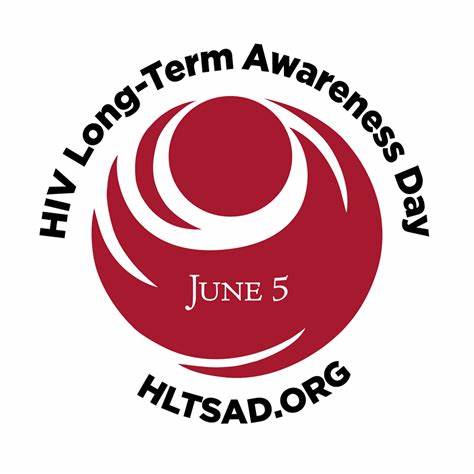
LTS HIV Long-Term survivors: few facts
-People who have lived with HIV for many years are often called Long-Term HIV Survivors;
-HIV Long-Term -Survivors Awareness Day (LTHSAD) is observed on 5 June because the AIDS epidemic officially began on 5 June 1981;
-Effective HIV treatment was launched in 1996;
-Pre-HAART LTS (Highly Active Anti-Retroviral Therapy) refers to People Living with HIV (PLHIV) before effective HIV drugs were launched;
-Post-HAART LTS refers to PLHIV for at least ten years and diagnosed after 1996;
-Young adults who acquired HIV at birth and have been living with HIV for twenty to thirty years are also long-term survivors.
HIV Long-Term Survivors
As the world celebrates its 6th annual HIV Long-Term Survivors Awareness Day (HLTSAD) to honour and recognize the contributions of those living the longest with HIV, let’s examine what we can learn from them.
People-living with HIV who got their diagnosis in the throes of the AIDS epidemic of the 1980s and 1990s before effective treatment was found and, who have lived with the virus for 25-35 years are known as HIV Long-term HIV Survivors (HLTS). They suffered overwhelming personal losses, overcame the fear of dying at a time when thousands around them died of AIDS, experienced stigma and discrimination at its worst and lived with extreme loneliness and isolation. Sadly, the traumatic experiences of that time have left some with a set of unique challenges linked mostly to mental and physical health.
Despite this distressing past experiences, they continue to demonstrate great strength and share stories of resilience and change. The biggest change is that they are still here though some of them were given a length of time left to live decades ago. They know that HIV is no longer a deadly disease and can, therefore, teach us how to look beyond uncertainty. They prove that great strides have been made with treatment, that medications work if taken as prescribed, and they now live in an era when the virus can become “undetectable” in the blood. They are living proof that it is wrong to say that we lost an entire generation to the AIDS pandemic.
Older Adults Living with HIV (OAHIV): Few facts culled from the UNAIDS 2014 Gap Report:[1]
-More and more people over 50 are acquiring HIV: every year, 120,000 people aged 50+ acquire HIV;
-Sub-Sahara Africa accounts for 60% of all PLHIV50+ (over 2 million PLHIV50+);
-In higher-income countries, those aged 50 and older represent approximately 30% of adult PLHIV;
-12% of PLHIV50+ lived in low to middle-income countries in 2013(LMICs);
-The cause of death for PLHIV50+ isn’t AIDS but co-morbidities: Over 80% of OAHIV will have at least one age-related disease, such as cancer or arthritis; [2]
-Approximately one-third will have at least three age-related diseases; [3]
There was an estimated 5.7 million PLHIV50 +; that number is expected to increase to 6.9 million by 2020;[4]
AIDS Survivor Syndrome (ASS)
As mentioned earlier HLTS live with a host of health issues known as ASS. The term refers to a distinct set of medical and psychological symptoms they experience linked to the grief and trauma of the HIV epidemic of the 80s. Nightmares, flashbacks, poor sleep, social isolation, anxiety are some of the symptoms of this condition. Today HLTS are increasingly meeting in groups to share their stories and deal with the guilt, social isolation and other issues they experience.
COVID19: hauntingly similar?
HLTS and older people living with HIV continue to learn how to age gracefully with HIV. They grapple with comorbidities as another virus spreads rapidly across the world creating fear in all communities including that of PLHIV. Long-term HIV survivors, especially those who have tested positive to this novel virus, have reported reliving a nightmare. They contracted HIV in the 80s at the peak of the AIDS epidemic when it was considered a death sentence, survived those worst HIV years but are, once again, experiencing another global public health crisis, helplessly watching death toll rise, drawing parallels between the COVID pandemic and HIV and hopeful that, once again, they will survive yet another deadly virus.
Sadly, after living with HIV for over three decades, some have tested positive and others have, unfortunately, died of COVID19. Thankfully, so far, viral suppression is “known” to keep COVID19 at bay.
Unique challenges
Older People Living with HIV (OPHIV) could be regarded as trailblazers. However, they face other unique challenges which affects the quality of their lives and have been left feeling marginalized as governments focus on achieving the UN 90-90-90 goals of increasing the uptake of testing, ensuring linkage to treatment and achieving viral suppression. Governments need to accord more attention to the unique issues that they face.
The fear of aging with HIV and other conditions, social isolation, depression, uncertainty about the future and poverty in old age are all concerns that are all too familiar to them. They have not remained quiet but have formed groups and associations and are determined to make sure their voice is heard. Also, charities and pharmaceuticals are beginning to showing interest in their plight. Not enough light at the end of the tunnel.
[1] UNAIDS Gap Report 2014: https://files.unaids.org/en/media/unaids/contentassets/documents/unaidspublication/2014/UNAIDS_Gap_report_en.pdf.
[2] Projections of global mortality and burden of disease from 2002 to 2030. https://journals.plos.org/plosmedicine/article?id=10.1371/journal.pmed.0030442.
[3]Future challenges for clinical care of an ageing population infected with HIV: a modelling study. https://www.ncbi.nlm.nih.gov/pmc/articles/PMC4528076/.
[4] Global and regional trends of people living with HIV aged 50 and over: Estimates and projections for 2000–2020.